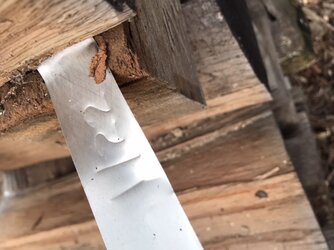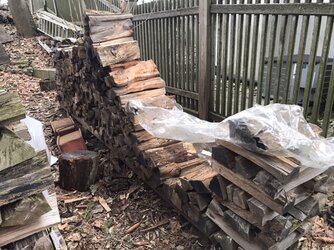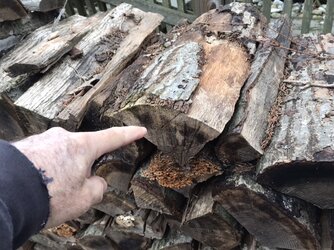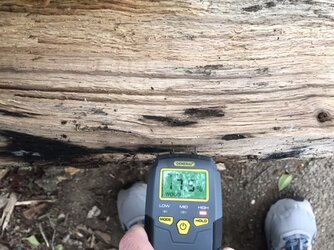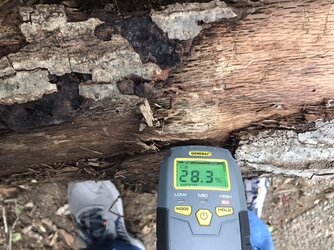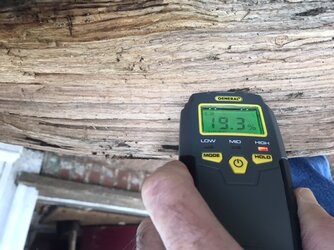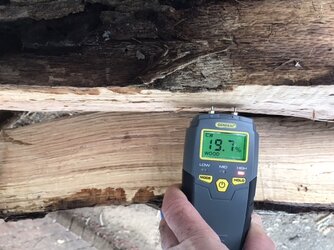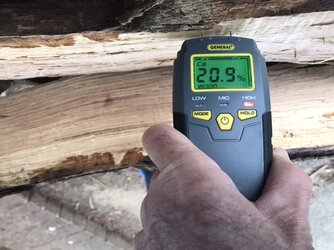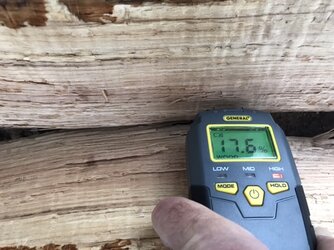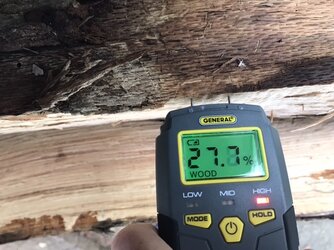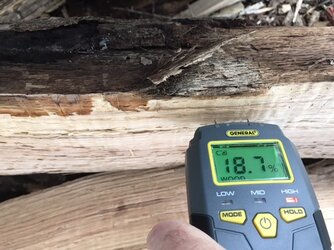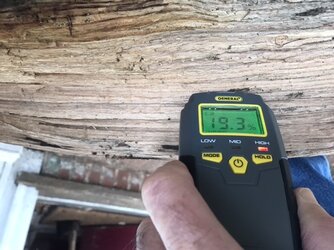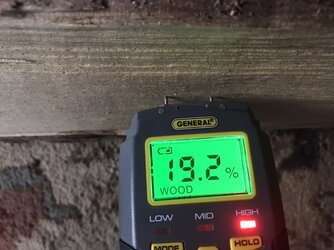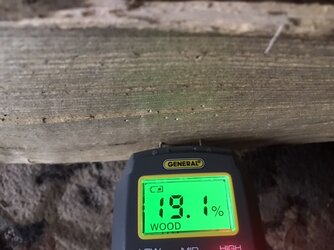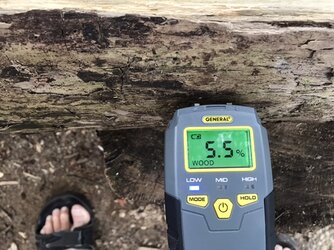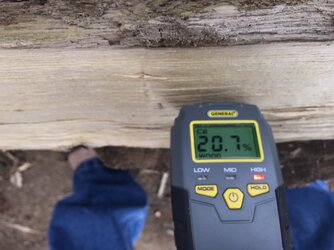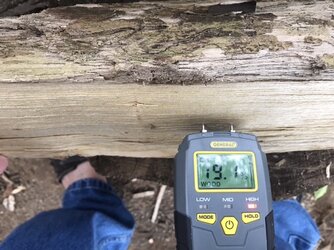Interesting Results here on Ash CSS 4/2023.
Tested at 38F so some adjustment in numbers is called for.
It's been rain and fog for many days in a row. Stopped raining yesterday.
Temps were mostly in the 40's F. for the rain / fog days.
This is the uncovered stack here in shade in NJ. The tested split was on the top row.
The 1st 3 readings are on the exterior 31, 11,16.
The rest are on the just split. Notice the last 16.3 right next to the soaked slightly punky layer.
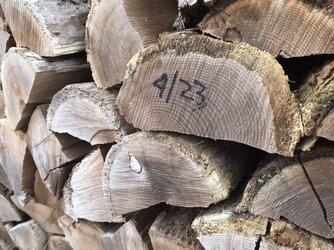
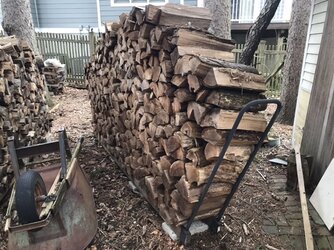
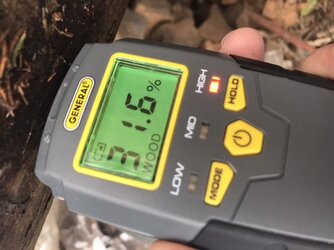
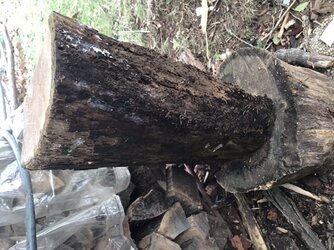
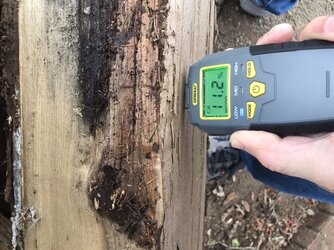
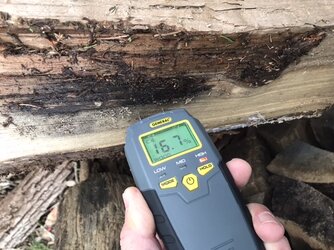
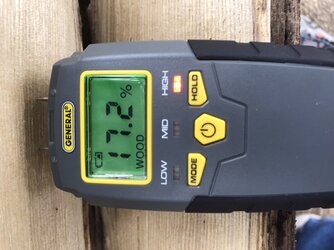
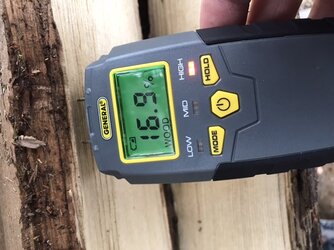
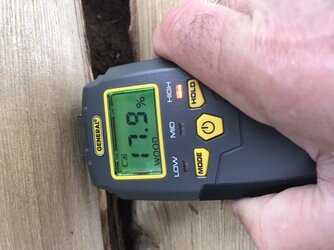
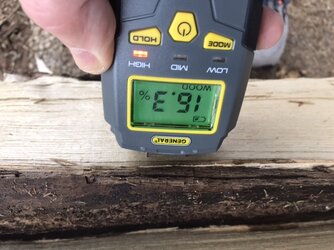
Tested at 38F so some adjustment in numbers is called for.
It's been rain and fog for many days in a row. Stopped raining yesterday.
Temps were mostly in the 40's F. for the rain / fog days.
This is the uncovered stack here in shade in NJ. The tested split was on the top row.
The 1st 3 readings are on the exterior 31, 11,16.
The rest are on the just split. Notice the last 16.3 right next to the soaked slightly punky layer.












